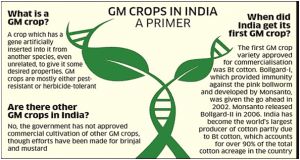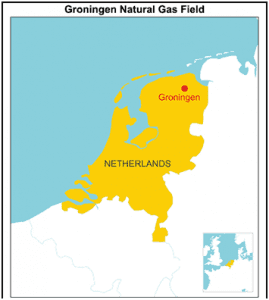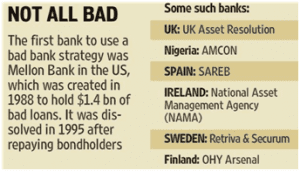DAILY CURRENT AFFAIRS (OCTOBER 21, 2022)
POLITY AND CONSTITUTION
1.COMPETITION COMMISSION OF INDIA IMPOSED A FINE ON MAKEMYTRIP, GOIBIBO AND OYO
THE CONTEXT: Recently,the Competition Commission of India (CCI) fined online hotel booking sites MakeMyTrip and Goibibo, and IPO-bound budget hotel chain OYO for a total of over Rs. 392 crore ($47 million) for anti-competitive conduct in hotel room listings.
THE EXPLANATION:
The competition watchdog had been investigating the companies since 2019, after the Federation of Hotel & Restaurant Associations of India (FHRAI) lodged a complaint that MakeMyTrip gave “special treatment” to SoftBank-backed Oyo on its platform. It had also complained that a listing agreement between the companies was creating a dominance in the online hotel booking market, and that MakeMyTrip used deep discounting methods.
What did the CCI say in its order?
- In a redacted order made public, the CCI said that MakeMyTrip and Goibibo will have to fix their “market behaviour”. According to CCI, apart from the monetary penalty, “MMT-Go [MakeMyTrip] is directed to suitably modify its agreements with hotels/chain hotels, to remove/abandon the price and room availability parity obligations imposed by it on its hotel/chain hotel partners with respect to other OTAs”.
- This essentially means that MakeMyTrip cannot force hotels it has partnered with to offer identical or higher prices on other platforms.
- “The Commission is of the view that the commercial arrangement between OYO and MMT-Go which led to the delisting of FabHotels, Treebo and the independent hotels, which were availing the services of these franchisors, was anticompetitive”.
VALUE ADDITION:
About Competition Commission of India (CCI)
- Competition Commission of India (CCI) is a statutory and quasi-judicial body and works under the Ministry of Corporate Affairs.
- The Competition Commission of India (CCI) was established in March 2009 (established in 2003 but became fully functional in 2009) by the Government of India under the Competition Act, 2002 for the administration, implementation, and enforcement of the Act.
- Competition Act, 2002: It repealed and replaced the Monopolies and Restrictive Trade Practices Act, 1969 (MRTP Act).
- Under the Act, the Competition Commission of India and the Competition Appellate Tribunal (COMAT) have been established.
- The Act prohibits anti-competitive agreements, abuse of dominant position by enterprises, and regulates combinations (acquisition, acquiring of control, and Merger and acquisition), which causes or are likely to cause an appreciable adverse effect on competition within India.
- In 2017, functions of the COMAT were subsumed under National Company Law Appellate Tribunal (NCLAT).
- Composition: It has a chairperson and 6 Members appointed by the Central Government.
- These members are appointed for 5 years or 65 years of age (whichever comes first). However, these members are eligible for reappointment.
Objectives and functions of CCI:
- To Eliminate practices having an adverse effect on competition
- To promote and sustain competition
- To protect the interests of consumers
- To ensure freedom of trade in the markets of India
- To Establish a robust competitive environment through:
- Proactive engagement with all stakeholders, including consumers, industry, government, and international jurisdictions.
- Being a knowledge-intensive organization with high competence level.
- Professionalism, transparency, resolve, and wisdom in enforcement.
ENVIRONMENT, ECOLOGY AND CLIMATE CHANGE
2. ‘MISSION LIFE’ (LIFESTYLE FOR ENVIRONMENT)
THE CONTEXT: Recently, Prime Minister in the presence of U.N. Secretary-General Antonio Guterres, launched ‘Mission LiFE’ (Lifestyle For Environment), a new initiative for sustainable and healthy lifestyle at the Statue of Unity in Gujarat.
THE EXPLANATION:
- Listing climate change and global warming as the main challenges before the world and mankind, the Prime Minister underlined that Mission LiFE makes the fight against climate change democratic with the contribution of everyone in per own capacity.
- According to him, India and the UN have joined hands in this new initiative which will become a global success. “India had proposed the International Day of Yoga, which was supported by the UN. Today it is inspiring millions of people around the world to lead a healthy life.”
OBJECTIVE OF THE INITIATIVE:
- LiFE envisions replacing the prevalent ‘use-and-dispose’ economy—governed by mindless and destructive consumption—with a circular economy, which would be defined by mindful and deliberate utilization.
- The Mission intends to nudge individuals to undertake simple acts in their daily lives that can contribute significantly to climate change when embraced across the world.
- LiFE plans to leverage the strength of social networks to influence social norms surrounding climate. The Mission plans to create and nurture a global network of individuals, namely ‘Pro-Planet People’ (P3), who will have a shared commitment to adopt and promote environmentally friendly lifestyles.
- Through the P3 community, the Mission seeks to create an ecosystem that will reinforce and enable environmentally friendly behaviours to be self-sustainable.
3. ‘APPROVAL OF GM MUSTARD MAY THREATEN FOOD SECURITY, INCREASE PESTICIDE TOLERANCE’
THE CONTEXT: According to experts, genetically modified crops may soon get the central government nod, a move that could pose a threat to crop diversity, food security and increase tolerance for use of pesticides.
THE EXPLANATION:
- Genetic Engineering Appraisal Committee (GEAC), which functions in the Union Ministry of Environment, Forest and Climate Change, might approve the commercial cultivation of modified mustard. A group of activists have also written to the ministry, objecting to the potential approval of “unsafe, unneeded and unwanted genetically modified organisms.”
- Also, they move might also severely affect the agrarian sector, as the seed market will be in the hands of private companies instead of farmers.
- This would be the first time since 2002 for such approval to grow GM mustard, a genetically modified hybrid variety of the mustard species, for consumption by the masses.
- However, experts fear that such a move would have multiple repercussions for crop diversity and threaten food security as a whole.
- The green signal for GM mustard was given by the central government in May 2017 after trials in Punjab Agricultural University (PAU) and Indian Agricultural Research Institute (IARI), New Delhi.
- However, it remained pending for approval from the environment ministry. The decision to approve it took a pause after activists and farmer bodies approached the Supreme Court to oppose the move.
ABOUT GM MUSTARD:
- Mustard is one of India’s most important winter crops sown between mid-October and late November.
- It a self-pollinating crop difficult to hybridise naturally as it cross-pollinate.
- It is largest edible oil yielding crop of India.
- DMH (Dhara Mustard Hybrid)-11 is genetically modified variety of mustard developed by Centre for Genetic Manipulation of Crop Plants at Delhi University.

VALUE ADDITION:
Genetic Engineering Appraisal Committee (GEAC) :
- The Genetic Engineering Appraisal Committee (GEAC) functions in the Ministry of Environment, Forest and Climate Change (MoEF&CC).
- It is responsible for appraisal of activities involving large scale use of hazardous microorganisms and recombinants in research and industrial production from the environmental angle.
- The committee is also responsible for appraisal of proposals relating to release of genetically engineered (GE) organisms and products into the environment including experimental field trials.
- GEAC is chaired by the Special Secretary/Additional Secretary of MoEF& CC and co-chaired by a representative from the Department of Biotechnology (DBT). Presently, it has 24 members and meets every month to review the applications in the areas indicated above.
SECURITY AFFAIRS
4. ‘SCORCHED-EARTH TACTICS’
THE CONTEXT: Recently, German Chancellor Olaf Scholz said Russian President Vladimir Putin was using “energy and hunger” as weapons but his “scorched earth tactics” would not help Russia win the war over Ukraine.
THE EXPLANATION:
What are scorched earth tactics?
- Scorched earth tactics form part of a military strategy which seeks to destroy anything that could be of use to the enemy, including energy supplies, bridges, provision stores, agricultural fields, road and railway links, etc. The destruction could be carried out by the enemy, or by the retreating army of a country which does not want invaders to use its resources. Harming civilians as part of this strategy has been banned under the 1977 Geneva Convention.
- According to the Oxford Reference, the “term was first used in English in 1937 in a report of the Sino-Japanese conflict, and is apparently a translation of Chinese jiāotŭ.”
- The strategy seeks to deplete the enemy’s resources to sustain warfare, and also break their morale by inflicting heavy hardships on combatants and non-combatants alike.
Over the past week, Russia has rained missiles on Ukraine’s cities, destroying civilian infrastructure, including power and water supply lines. As winter approaches, lack of electricity is likely to cause serious suffering. Experts have commented that the tactic is being used by Russia as on the actual battlefield, its military is experiencing setbacks.
Some past instances
- Scorched earth policy has been part of warfare since ancient times, with the nomad Scythians using the tactics in their war against the Persian Achaemenid Empire led by King Darius the Great (who ruled 522 BCE to 486 BCE). The nomadic herders Scythians would hide in the steppes after destroying food supplies and poisoning wells.
- In India, the armies of Maratha leader Chhatrapati Shivaji were known for their scorched earth tactics. Some historians have said that while the Maratha leaders looted and burnt enemy towns, they were under orders to not harm civilians or desecrate religious sites
GOVERNMENT SCHEMES AND INITIATIVES IN NEWS
5. CENTRE LAUNCHES PROGRAMME TO STRENGTHEN KASHI-T.N. BOND- KASHI-TAMIL SANGAMAM’
THE CONTEXT: Amid the continued debates over the imposition of Hindi across the country, the Union Government announced a month-long programme to “strengthen” and “rekindle” the cultural and civilisational bond between Tamil Nadu and Varanasi.
THE EXPLANATION:
- Named the ‘Kashi-Tamil Sangamam’, the programme would be held from November 16 to December 16 this year.
- “The period will cover the Tamil month of Karthikeya during which all Tamil households go pray to Lord Shiva. This programme, which would be a part of the Ek Bharat Shreshtha Bharat initiative, is aimed at rekindling the civilisational link between the new Kashi and Tamil Nadu — both deep centres of knowledge.
- As part of the programme, a total of 2,500 people divided into 12 groups would be travelling to Varanasi by train during the month-long period. The journey points in Tamil Nadu would be Chennai, Rameswaram and Coimbatore. The groups would include students, teachers, artisans and people from various walks of life.
- The knowledge partners for the Kashi-Tamil Nadu Sangamam programme would be IIT-Madras and the Banaras Hindu University, while the Uttar Pradesh government would be the host State.
- The other stakeholders would be departments of culture, textiles, food-processing, commerce and films.
SIGNIFICANCE:
- The Kashi Tamil Sangamam is a first of its kind initiative to showcase the entire Tamil cultural heritage.
- Activities will be centred around a series of themes – ancient texts, literature, spirituality, philosophy, music, dance, drama, yoga, Ayurveda, handlooms, handicrafts etc.
- Bharatanatyam dance, Carnatic music, Tamil folk music, Nadaswaram music concert, Thevaram thiruvasagam in Tamil music form, debate on Kamba Ramayana, Villu-paattu, Bommalattam, Silambattam, Kavadi Attam, Karagam, Pattimandram, Tamil folk dances Karakattam, Poikkal Kuthirai, Thappaattam, etc., have been planned across different locations in Varanasi.
VALUE ADDITION:
EK BHARAT SHRESHTHA BHARAT PROGRAMME
Ek Bharat Shreshtha Bharat programme aims to enhance interaction & promote mutual understanding between people of different states/UTs through the concept of state/UT pairing. The states carry out activities to promote a sustained and structured cultural connect in the areas of language learning, culture, traditions & music, tourism & cuisine, sports and sharing of best practices, etc.
The mission of Ek Bharat Shreshtha Bharat is as follows:
- To CELEBRATE the Unity in Diversity of our Nation and to maintain and strengthen the fabric of traditionally existing emotional bonds between the people of our Country;
- To PROMOTE the spirit of national integration through a deep and structured engagement between all Indian States and Union Territories through a year-long planned engagement between States;
- To SHOWCASE the rich heritage and culture, customs and traditions of either State for enabling people to understand and appreciate the diversity that is India, thus fostering a sense of common identity
- To ESTABLISH long-term engagements and,
- To CREATE an environment which promotes learning between States by sharing best practices and experiences.
6. U.P. BAGS TOP HONOURS AT PMAY-U AWARDS 2021
THE CONTEXT: Recently, Union Ministry of Housing & Urban Affairs recognized the states for PMAY-U Awards 2021.
THE EXPLANATION:
- Uttar Pradesh bagged the first position followed by Madhya Pradesh and Tamil Nadu at second and third place, respectively.
- Poll-bound Gujarat saw five special category awards — for performance related to Affordable Rental Housing Complexes and ‘Convergence with other Missions’ — coming its way.
- Madhya Pradesh got three special category awards followed by Jammu and Kashmir, which was adjudged the ‘Best Performing UT’ alongside Dadra and Nagar Haveli and Daman & Diu.
- Also, Kudumbashree has received two national awards of the Pradhan Mantri Awas Yojana (PMAY) Urban Award 2021.
- According to the Ministry of Housing and Urban Affair, 1.23 crore houses were sanctioned under the scheme of which 64 lakh — over 52% — have already been completed and delivered while the rest were at various stages of completion.
- Also, the Ministry highlighted that PMAY-U, had emerged as the largest housing scheme in the world since its launch seven years ago in June, 2015 with the number of houses sanctioned under it so far — 1.23 crore — “9 times the number that was achieved in the 10 years of the previous regime” between 2004 and 2014.
VALUE ADDITION:
Pradhan Mantri Awas Yojana (Housing for All – Urban):
PMAY-U scheme is aimed at confronting and tiding over the shortage of housing facilities in urban India for beneficiaries under the Economically Weaker Section (EWS), Low-Income Groups (LIGs) and Middle Income Groups (MIGs) categories.
Scope
- The Mission covers the entire urban area consisting of Statutory Towns, Notified Planning Areas, Development Authorities, Special Area Development Authorities, Industrial Development Authorities or any such authority under State legislation which is entrusted with the functions of urban planning & regulations.
- “Housing for All” Mission for urban area is being implemented during 2015-2022 and this Mission will provide central assistance to implementing agencies through States and UTs for providing houses to all eligible families/beneficiaries by 2022.
- Mission will be implemented as Centrally Sponsored Scheme (CSS) except for the component of credit linked subsidy which will be implemented as a Central Sector Scheme.
THE PRELIMS PRACTICE QUESTION
QUESTION OF THE DAY
Q1. Groningen gas fields, recently seen in news, are located in-
a) Russia
b) Netherlands
c) S.A.
d) Mexico
Answer: B
Explanation:
Please refer to the given map-

